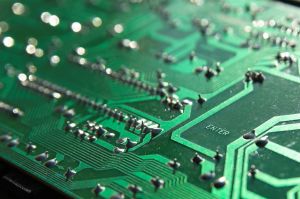Physicists from Monash University and Japanese institutions — including the University of Tokyo and the Japan Science and Technology Agency — viewed the electric fields of atoms using a new advanced scanning transmission electron microscopy technique.
Electric fields are produced by the electrically-charged particles within atoms known as protons and electrons. The electrical forces between the positively and negatively charged particles play an important structural role - they hold the atoms together.
By visualising the pattern of the fields produced by these charges, scientists will gain further insight into the electrical properties of materials. For instance, being able to manufacture electric field patterns on small length scales is a route to high capacity data storage.
Co-author Dr Scott Findlay of Monash University's School of Physics said the technique he developed with his Japanese colleagues was a breakthrough.
"Electron microscopy is a fast-developing field," Dr Findlay said.
"Recent advances have let us see where individual atoms sit in a material, but it has been much harder to see their electric fields."
The new technique allows the researchers to view electric field patterns by the deflections they induced in a beam of electrons.
"It's like rolling marbles to look for slight slopes in the ground.
"If the marble deflects to the left, that must be downhill; if the beam of electrons deflects to the left, that must be the direction the field points."
Dr Findlay said that viewing materials on the atomic level gave an entirely new perspective.
"We're seeing things that we've never seen before," he said.
"Understanding the behaviour of materials and their electric fields on a very small scale expands what we are able to do with them."
A number of groups internationally had been working on picturing electric fields. Dr Findlay will continue to work with collaborators in Japan to further refine their technique and apply it to developing new materials.





-160x160-state_article-rel-cat.png)

-160x160-state_article-rel-cat.png)





-160x160-state_article-rel-cat.png)




-160x160-state_article-rel-cat.png)




